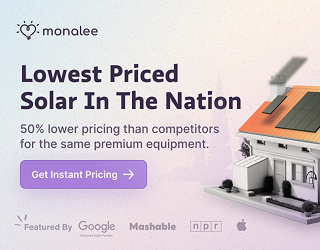COP21 Slouching Toward Climate Plan Wednesday AM
Laurent Fabius, COP21 president and France’s foreign minister, has just released version 1 of a draft text on COP21 agenda item 4 (b)—the Durban Platform for Enhanced Action (decision 1/CP.17) at 3:00PM GMT. Read the text here.
Fabius characterized the current situation thus:
“We’ve made progress but still a lot of work remains to be done. Nothing is agreed until everything is agreed.”
Further detail from Fabius, according to Reuters: the document is shorter by about a third (14 pages) than the last draft, and two-thirds of the disputes over wording have been settled. This “constitutes progress,” Fabius said.
US Secretary of State John Kerry buoyed the spirit of the conference by urging negotiators to ensure regular reporting from all countries, as “the only way to give both the private and public sectors confidence that the promises we’re making have weight behind them,” by announcing yet more money for countries to defend themselves against climate change, and by doubling US climate adaption grants to the most vulnerable countries to a total $860 million a year.
Nozipho Joyce Mxakato-Diseko, the South African career diplomat who leads the large G77+China bloc and also participates in the BASIC coalition (Brazil, South Africa, India, and China), spoke to deceit from the wealthy nations in trying to divide the less advantaged group by giving aid only to the most vulnerable countries rather than helping all developing states.
Prakash Javadekar, the Environment Minister of India, spoke to the value of continued dialogue and compromise:
“I want to make it very clear that if everybody, all nations, keep a positive mindset, an accommodative spirit… then solution is possible, feasible, practical, and most acceptable.”
Says Alden Meyer, director of strategy and policy at the Union of Concerned Scientists:
“It’s encouraging to see a cleaner text that contains fewer brackets as a result of agreements being reached on issues like technology development and transfer and capacity building. However, the agreements on the core political issues—the long-term goal, review and revision of proposed national contributions, transparency, loss and damage, and finance—have yet to be resolved.
“We’re now at the critical point of the negotiations. Over the next day or two, ministers need to rise above their differences to create a final agreement that rapidly transitions the world to a clean energy economy and allows us to avoid the worst impacts of climate change.”
Still to be decided in the second meeting of the day:
Resolution of these articles of the DRAFT AGREEMENT (now 14 pages)
Article 2: Purpose
To hold the increase in the global average temperature to Option 1: below 2 °C above pre-industrial levels, Option 2: well below 2°C above pre-industrial levels [and to [rapidly] scale up global efforts to limit temperature increase to below 1.5 °C] [,while recognizing that in some regions and vulnerable ecosystems high risks are projected even for warming above 1.5 °C], Option 3: below 1.5°C above pre-industrial levels,
Two options under “General”
Article 3: Mitigation
Option 1: Parties collectively aim to reach the global temperature goal referred to in Article 2 through [a peaking of global greenhouse gas emissions as soon as possible, recognizing that peaking requires deeper cuts of emissions of developed countries and will be longer for developing countries; rapid reductions thereafter to [40– 70 per cent][70–95 per cent] below 2010 levels by 2050; toward achieving net zero greenhouse gas emissions [by the end][after the middle] of the century] informed by best available science, on the basis of equity and in the context of sustainable development and poverty eradication.
Option 2: Parties collectively aim to reach the global temperature goal referred to in Article 2 through a long- term global low emissions [transformation toward [climate neutrality][decarbonization]] over the course of this century informed by best available science, on the basis of equity and in the context of sustainable development and poverty eradication.
Two options under “Differentiation”
Three options under “Support”
Article 5: Loss and Damage
Option to retain language here or combine with Article 4 alongside adaptation provision
Article 6: Finance
3 options under “Mobilization”
3 options under “Scale”
3 options under “Communication”
Article 9: Transparency
“A transparency framework for action and support”
3 options, all taking in Parties’ different capacities
Resolution of these articles of the DRAFT DECISION (now 15 pages):
2 Finance options
2 sets of options under “Technology Development And Transfer”
Options for the Global Stocktake
Options for Support under Workstream 2
The text also acknowledges and welcomes future support from civil society, the private sector, financial institutions, cities, and other subnational authorities; and local communities and indigenous peoples. Importantly, it gives a nod to carbon pricing at the end: “Also recognizes the important role of carbon-pricing in providing incentives for emission reduction activities.”
Have a tip for CleanTechnica? Want to advertise? Want to suggest a guest for our CleanTech Talk podcast? Contact us here.
Sign up for our daily newsletter for 15 new cleantech stories a day. Or sign up for our weekly one on top stories of the week if daily is too frequent.
CleanTechnica's Comment Policy
